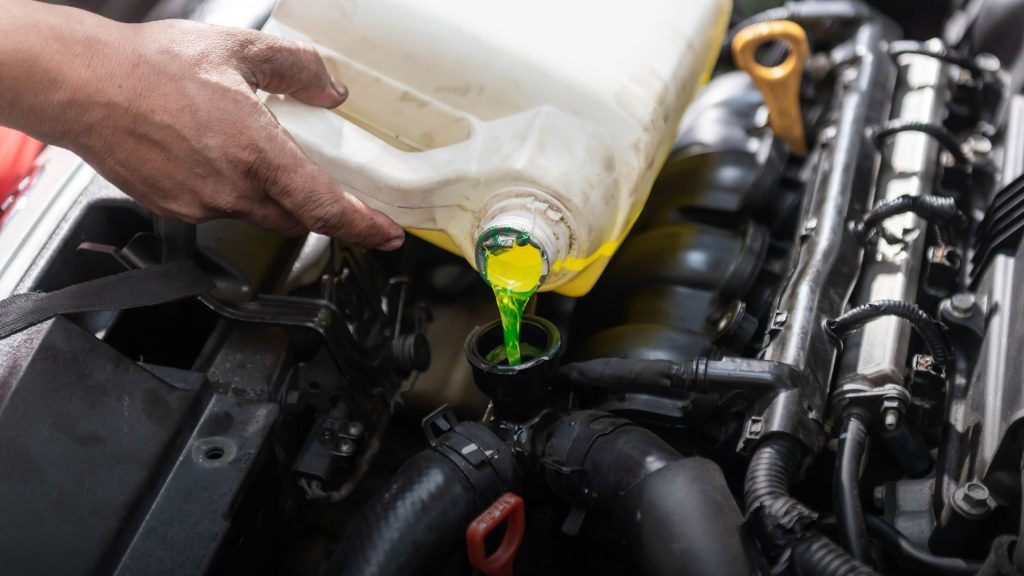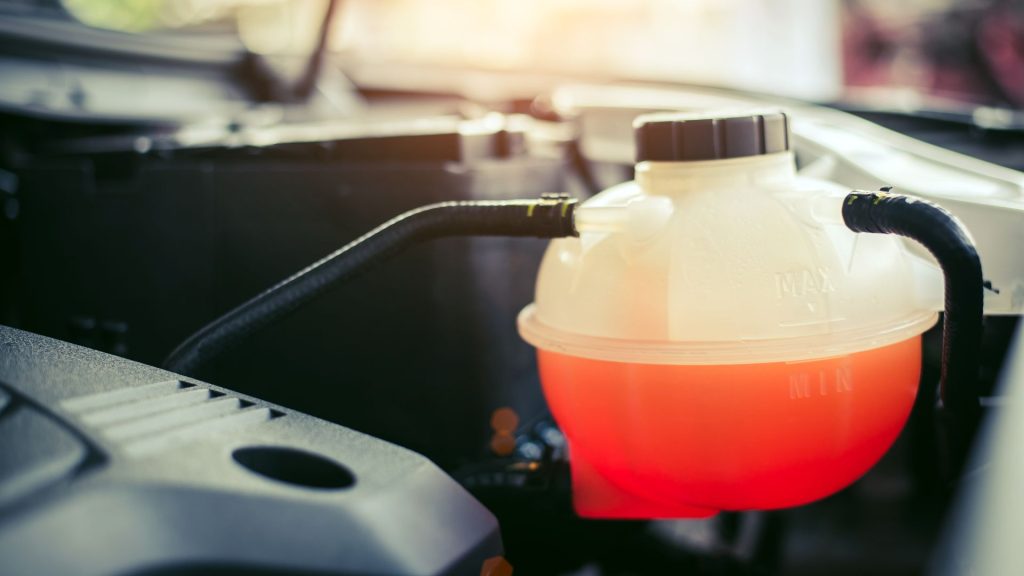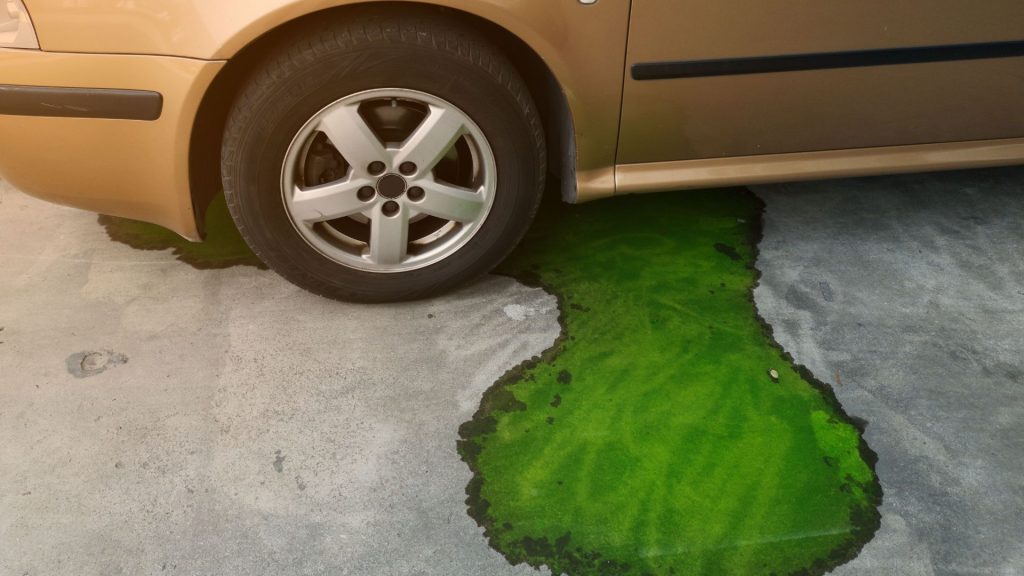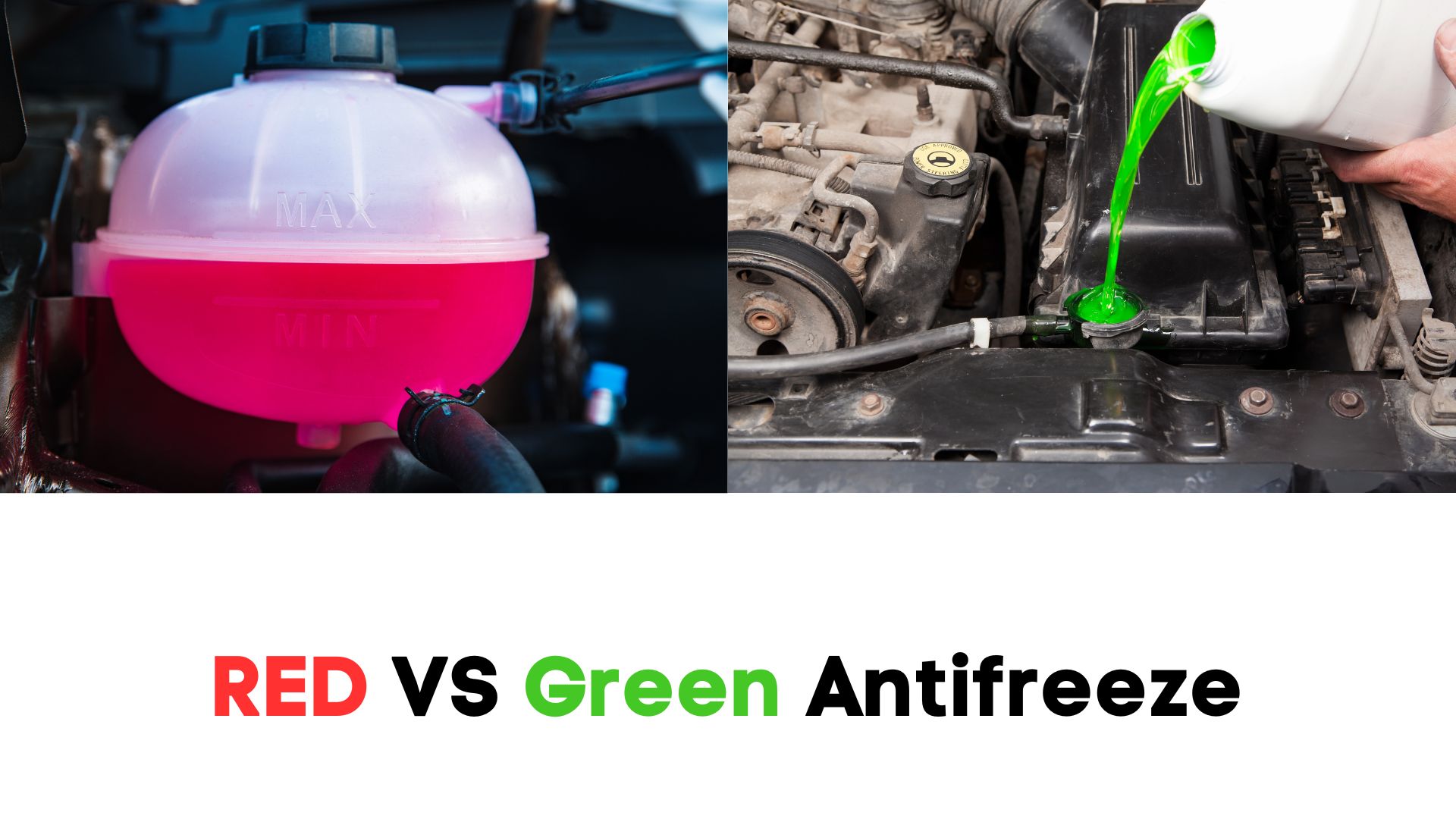The International Journal Of Trend In Research and Development (Volume 4) uses terms like ‘Organic Acid Technology’ and ‘Inorganic Acid Technology’ to describe the different types of antifreeze. But what do they mean? How do they fit into the ‘Red VS Green Antifreeze’ debate? The guide below will tell you.
1). Composition And Chemistry
Technically, red and green antifreeze perform a similar function. They will elevate the water’s boiling point while reducing its freezing point. This allows your vehicle to tolerate extreme conditions. Without antifreeze, the water would freeze in the radiator or boil and evaporate in response to freezing or boiling temperatures.
However, even though they achieve similar objectives, red and green antifreeze differ on a fundamental level:
Green Antifreeze

- Green antifreeze is the traditional coolant. According to Hemmings, it became the industry standard in 1937, replacing ethylene oxide.
- Green antifreeze gained prominence because of its stability and simplicity. You could protect your engine by mixing one part of green antifreeze with one part of water (50/50). The calculations experts perform today to determine the correct antifreeze-to-water ratio were largely unnecessary.
- Manufacturers make green antifreeze with inorganic acid technology (IAT).
- The product’s chemical base is usually ethylene glycol. But some manufacturers use propylene glycol. Depending on the brand, further analysis may reveal silicate, phosphates, and other additives.
Red Antifreeze

- Initially, manufacturers relied on inorganic acid technology to make antifreeze. Eventually, they developed organic acid technology (OAT), paving the way for new antifreeze formulations. Finally, hybrid organic acid technology (HOAT) entered the picture. It combines IAT and OAT.
- OAT and HOAT allow manufacturers to produce red antifreeze. They use pure mono-ethylene glycol.
- Red antifreeze is more stable than green antifreeze. Besides lasting longer, the product has better compatibility with aluminum radiators.
- You should always check the packaging to identify the anti-corrosive additives and inhibitors included in your red antifreeze. Some manufacturers formulate distinct antifreeze for their vehicles. In other words, you can’t use any random red antifreeze you encounter in your local store.
- Take GM as an example. They call their antifreeze Dex-Cool, and they make it using propylene glycol. However, the company has also added the ‘Dex-Cool’ name to its orange antifreeze, which tends to create confusion among laypeople that associate the ‘Dex-Cool’ name with red antifreeze.
- Don’t expect every manufacturer to call their red antifreeze ‘Dex-Cool.’
- Some red antifreeze brands include carboxylic acid, which extends the engine’s lifespan.
- While all coolants are dangerous to human health, propylene glycol-based coolants have lower acute toxicity than ethylene glycol-based products. This is why I recommend propylene glycol-based antifreeze (such as red antifreeze) in scenarios where ingestion could occur.
2). Compatibility With Different Coolant Systems
- Red antifreeze is a perfect fit for aluminum radiators. It typically works in newer vehicles. Mechanics expect the color to extend the water pump’s life.
- Green antifreeze works in older engines. It appeared early in the 20th century and dominated the marketplace for decades. Today, green antifreeze has additives (nitrates, nitrites, phosphates, silicates, etc.) that fight corrosion and erosion in older and newer engines.
- However, if a manufacturer recommends red antifreeze for a modern engine, use red antifreeze. Green antifreeze has limitations that make it unsuitable for modern engines. For instance, it uses an extra foam layer to keep the engine’s metallic components from overheating. However, this attribute disrupts the heat exchange process, which, in turn, lowers the water pump’s lifespan.
- The country can influence your choice of antifreeze. For instance, US and Japanese car manufacturers use phosphates as corrosion inhibitors in their antifreeze formulas. The additive protects ferrous metals from corrosion. It also reduces cavitation corrosion. On the other hand, European carmakers don’t want phosphates in their antifreeze. They can replicate the benefits of phosphates without relying on the additive. They want to avoid the negative consequences that can occur (scaling) when phosphates and hard water mix.
- But proponents of phosphate use argue that phosphate levels in American and Japanese antifreeze are too low for solids to form on the cooling system walls.
3). Longevity And Maintenance
- You find green antifreeze in older cars (made before the 2000s) with a variety of metal components, including steel and copper. Unfortunately, it is less stable. You should change the coolant every three years (36,000 miles) because its chemical additive technology degrades quickly.
- Red antifreeze can last five years (or 50,000 miles). In other words, it protects your engine for a longer duration.
Don’t base your selection of antifreeze on the color. The color comes from dyes, not the chemical composition. Manufacturers can make their antifreeze any color they want. Therefore, don’t assume all green and red coolants are the same.
You should base your selection on the ingredients listed on the packaging and in the manual.
4). Availability And Industrial Standards
Most mechanics prefer red antifreeze over its green counterpart. This is because red antifreeze is more stable and longer lasting. However, green is still the most common antifreeze on the market.
It is easier to access because the antifreeze has been in use for nearly a century. Red antifreeze is a relatively recent innovation. More importantly, red antifreeze is more expensive. Therefore, budget-constrained individuals (the majority of drivers) will gravitate towards green antifreeze unless the mechanic says otherwise.
Ultimately, your car will influence your decision. If older vehicles are the majority in your area, local retailers will stock green antifreeze. But if your community favors newer vehicles, retailers will stock red antifreeze.
Although you cannot fail to find either option. These days, you can buy anything you want from the Internet. Even if your local retailers favor red antifreeze because of an influx of new vehicles, you can submit a request for green antifreeze from a reputable supplier online if you need it.
5). Environmental Considerations
BCSPCA has highlighted a concern many laypeople rarely consider. Antifreeze has a sweet taste. This is problematic because the product is highly toxic. This is why environmentally conscious drivers worry when coolant leaks from their cars.

They don’t want their pets and the local wildlife to fall prey to the substance. In some places, the law compels manufacturers to add a bittering agent to antifreeze to make the substance less appealing to animals. After all, one teaspoon of antifreeze will end a cat’s life. Increase the quantity to a tablespoon, and you will kill a dog.
The biggest threat to the environment is ethylene glycol because of its considerable toxicity. Propylene glycol-based antifreeze is better. It is biodegradable, recyclable, and less toxic.
Personal Preference And Manufacturer Recommendations
- The manufacturer has the final say. There is no standard antifreeze type that works in every car. The manufacturer knows the coolant that works best for their engine, and they will tell you accordingly.
- But if you’ve decided to make this decision yourself, red antifreeze is your best option, especially if you own a modern vehicle made after the 2000s. Red antifreeze lasts longer than its green counterpart. It is also more stable, relying on organic inhibitor additives. Green antifreeze favors inorganic additives.
- The only significant drawback associated with red antifreeze is its price tag. Red antifreeze is more expensive than green coolant.
- If you have doubts regarding the correct coolant type for your vehicle, consult a mechanic. You can’t afford to use the wrong coolant. Green antifreeze was widespread in the past because the coolant systems in most cars included brass, rubber, and cast iron parts.
- Today, manufacturers use everything from silicon and steel to aluminum and copper, to mention but a few. Therefore, green antifreeze with its inorganic additives is not enough. You need an antifreeze the manufacturer has recommended because they take the vehicle’s unique attributes into account.
- The wrong coolant exposes water pumps, hoses, radiators, and gaskets to corrosion. You may take days or weeks to observe the consequences of using the wrong antifreeze.
- It is just as dangerous to mix red and green antifreeze. The combination will produce a thick substance that can’t flow as smoothly and effectively as you would like in the cooling system. You will disrupt the engine’s operations, ruining the cylinder gasket and clogging the water pump.
- These side effects will encourage overheating, doing irreversible damage to the engine. If you’ve mixed red and green antifreeze, park the vehicle and let it cool. Open the hood and flush the coolant out of the system. This involves accessing the reservoir and removing the drain plug.
- Again, antifreeze is toxic. Don’t permit the substance to pour on the floor. Place a pan beneath the drain to contain the coolant.
- Add a drain flush product to the radiator and start the vehicle. Let it idle for a few minutes before flushing the drain flush product out of the system and adding new coolant (Red or Green, depending on the mechanic’s recommendation).
- Mishaps of this sort only occur when people ignore the manual. You should base your selection on the manual’s recommendations. And if you don’t have a manual, contact the manufacturer.

